
Birmingham, Ala. has Prepared Design and Organization for New WPA Project
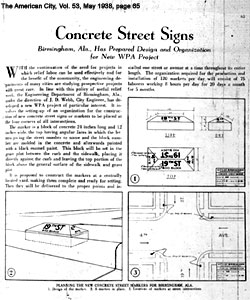 With the continuation of the need for projects in which relief labor can be used effectively and for the
benefit of the community, the engineering departments of many cities are studying prospective projects
with great care. In line with this policy of useful relief work. The Engineering Department of Birmingham,
Ala., under the direction of J. D. Webb, City Engineer, has developed a new WPA project of particular interest. It involves the setting-up of an organization for the construction of new
concrete street signs or markers to be placed at the four corners of all intersections.
With the continuation of the need for projects in which relief labor can be used effectively and for the
benefit of the community, the engineering departments of many cities are studying prospective projects
with great care. In line with this policy of useful relief work. The Engineering Department of Birmingham,
Ala., under the direction of J. D. Webb, City Engineer, has developed a new WPA project of particular interest. It involves the setting-up of an organization for the construction of new
concrete street signs or markers to be placed at the four corners of all intersections.
The marker is a block of concrete 24 inches long and 12 inches wide. The top having angular faces in which the letters giving the street number or name and the block number are molded in the concrete and afterwards painted with a black enamel paint. This block will be set in the grass plot between the curb and the sidewalk, placing it directly against the curb and leaving the top portion of the block above the general surface of the sidewalk and grass plot.
It is proposed to construct the markers at a centrally located yard, making them complete and ready for setting. Then they will be delivered to the proper points and installed one street or avenue at a time throughout its entire length. The organization required for the production and installation of 120 markers per day will consist of 75 labors working 8 hours per day for 20 days a month for 5 months.
Planning the New Concrete Street Markers for Birmingham, Ala.
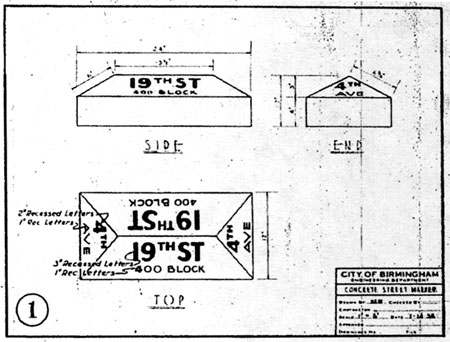
1. Design of the marker.
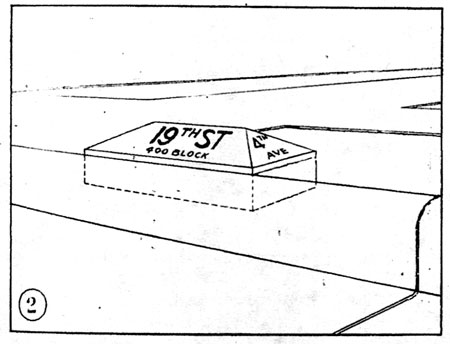
2. A marker in place.
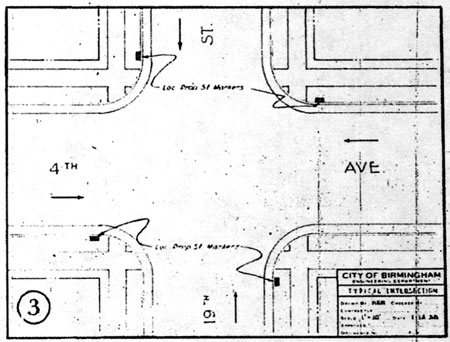
3. Locations of markers at street intersections.
-- from The American City, Vol. 53, May 1938, p. 65
Example of Concrete Street Sign
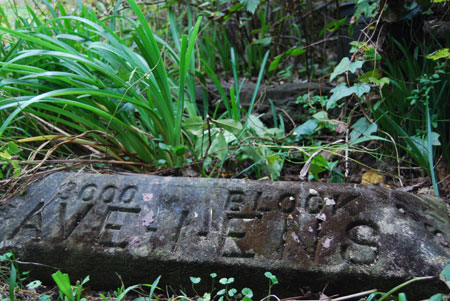
Making of Concrete Street Signs
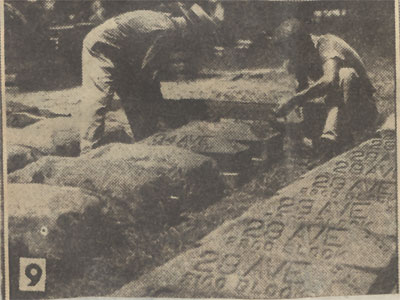
WPA workers molding some of the 14,534 street markers for Birmingham.
-- from Manual of Beautification